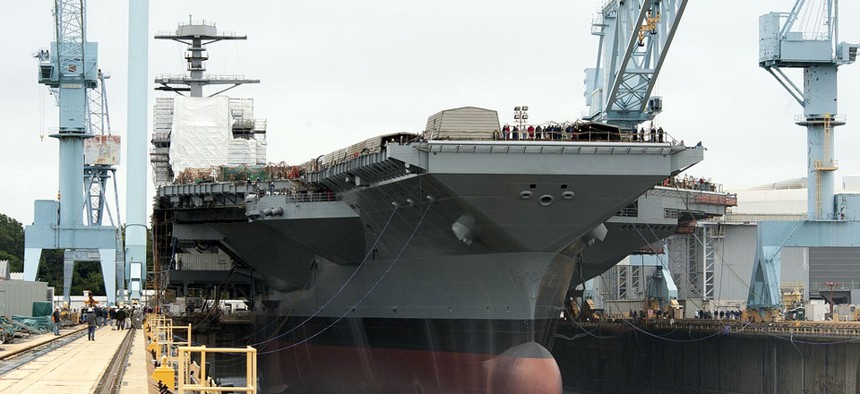Failures Beset Navy’s New Aircraft Carrier and Patrol Planes

Flickr user cmccain202dc
Software problems render attack sub sonar ineffective.
A number of problems in key systems of the Navy’s next generation aircraft carrier and patrol aircraft threaten their operational effectiveness, the Pentagon’s test organization said in its annual report to Congress.
J. Michael Gilmore, director of operational test and evaluation for the Defense Department, also highlighted software problems with an advanced submarine sonar system that made it difficult to detect surface ships. Gilmore deemed the USS San Antonio class of amphibious transport dock ships not "operationally suitable."
The $12 billion USS Gerald Ford, built by Huntington Ingalls Industries and slated to join the fleet in 2016, will launch its aircraft with a new Electromagnetic Aircraft Launch System instead of the steam catapult used in previous carriers. EMALS experienced 201 failures during 1,967 launches at a Lakehurst, N.J., test site, a failure rate “five times higher than should be expected,” the test report said.
The Ford will also be equipped with new digitally controlled arresting gear to recover aircraft; the failure rate for this system at the Lakehurst test site is “248 times higher than should be expected,” the test report said. The new carrier also incorporates an advanced dual band radar system and new elevators, but Gilmore said, “Reliability test data are not available for the radar and the weapons elevators.”
The test report also faulted communications systems on the Ford, and said the new ship lacks multiple common data links, or CDL, and this fact limits the carrier’s ability to communicate with current and future systems, including MH-60 helicopters, P-3 and P-8 aircraft, unmanned aerial vehicles, and other assets. “Lack of CDL coverage on CVN-78 will limit its operational effectiveness,” the report said.
The P-8A, a new maritime surveillance aircraft built by Boeing on its commercial 737 airframe lacks the antisubmarine warfare capabilities of the plane it will replace, the Lockheed P3 propjet, which went into service in 1961, the test report said. “Current P-8A ASW search capabilities provide only a small fraction of what is needed for most Navy operational plans,” the report said.
The Navy plans to buy 122 P-8s, at a total cost of $33.6 billion, and had its first operational deployment to Japan in December.
“Radar performance deficiencies, sensor integration problems, and data transfer system interoperability shortfalls degrade imagery intelligence collection and dissemination capabilities” make the P-8 “not effective” for its intelligence, surveillance and reconnaissance missions, Gilmore reported.
The Acoustic Rapid Commercial Off-the-Shelf Insertion, a sonar system for Virginia class attack submarines under development by Lockheed Martin since 2003 at a cost of more than $200 million, suffers from software coding problems. As a result, “the sonar was incapable of functioning in high reverberation environments, making detection of ships nearly impossible,” the test report said.
The Navy did develop a software update to resolve these problems, but it requires operational testing that has not yet occurred.
Gilmore reported that the 11 San Antonio class amphibious ships built by Huntington Ingalls at a cost if $1.5 billion each are “not operationally effective, not operationally suitable, and not survivable in a hostile environment,” due to deficient shipboard self defense systems..






